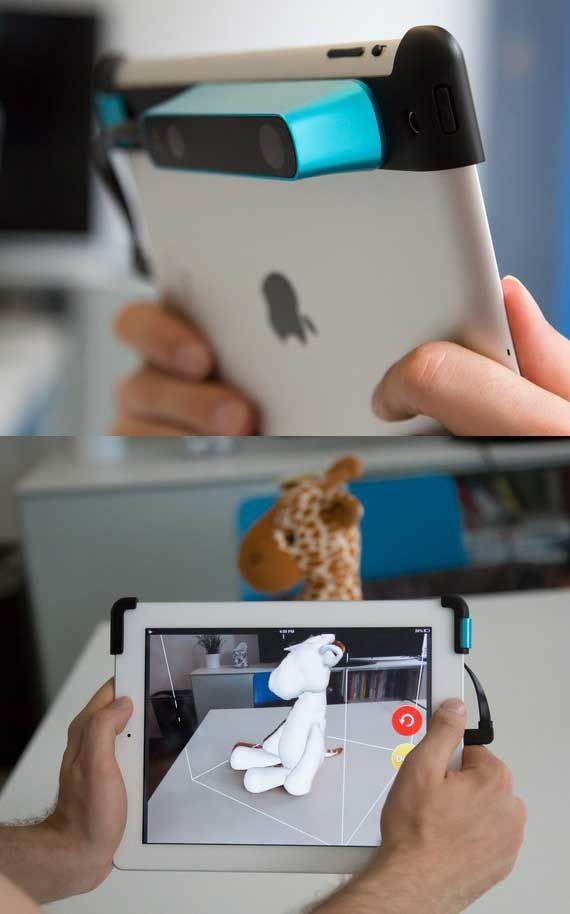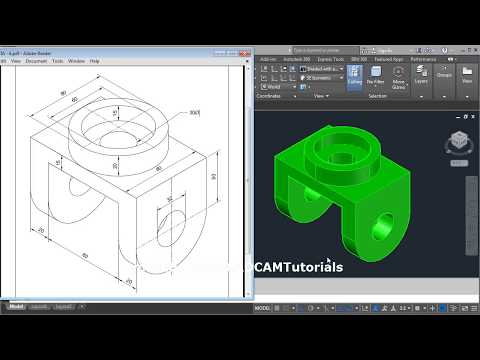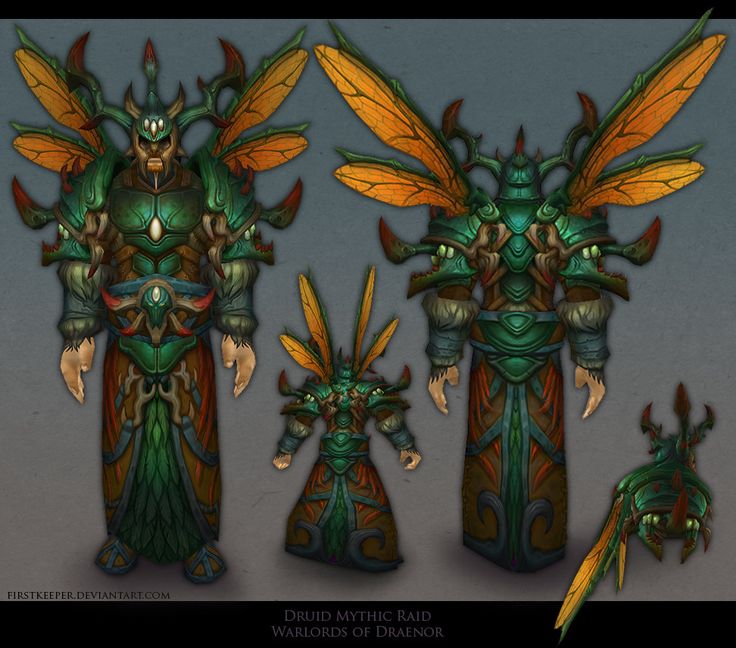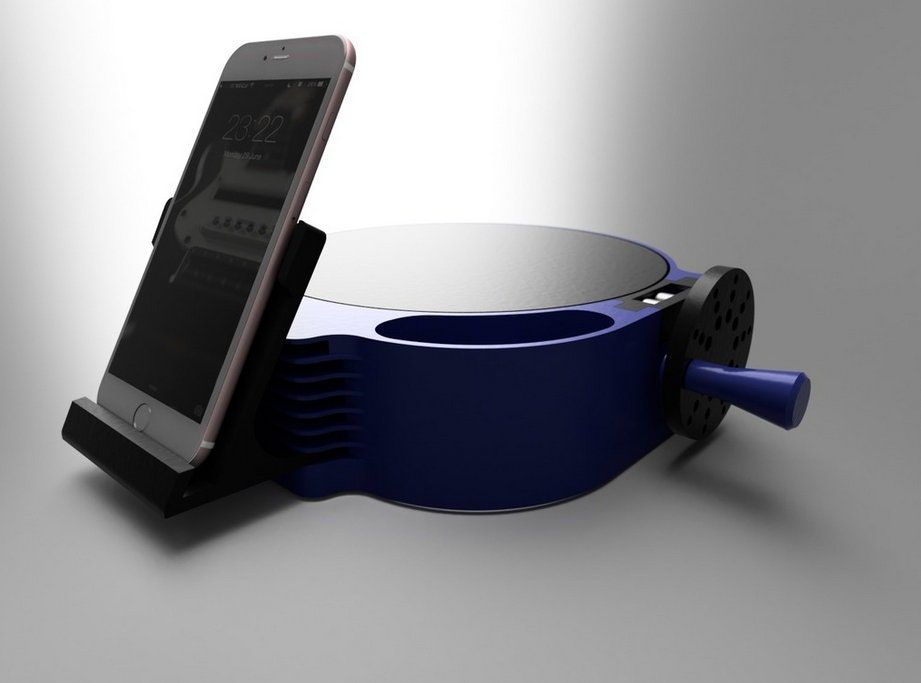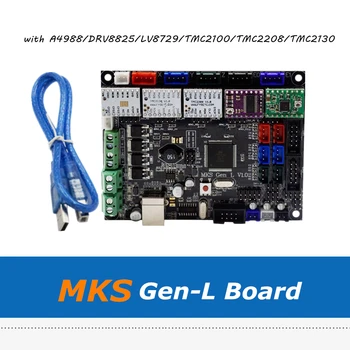Ao 101 3d printer
3D Printer Review: LulzBot AO-101
Review Perspective
Although 3DPI offers great breadth and depth for following the developments in 3D printing technology and its applications, there is one angle I have found to be missing — a more practical approach — and it has been somewhat bothering me. Over the course of the coming months I, with a couple of other members of the team, hope to rectify this with a series of 3D printer reviews. For this first one, I would like to clarify that I am not a professional, not even a ‘prosumer’ so this review will not come from the same perspective as the majority of 3D printer (and related accessories) reviews, which tend to be conducted by either enthusiasts or advanced makers with years of experience.
Hopefully this perspective is something that you will find useful – with minimal tech jargon and more focus on practical issues. However, as 3DPI is a site for everyone interested in the world of 3D printing, we will also be sensitive to the more advanced user’s approach. I believe that combining the perspectives of different groups with different interests will offer a valuable learning experience for all parties. We’ll be also adding videos in our upcoming tests – and of course invite feedback from you.
Overview
What we’re looking at here is the LulzBot AO-101 3D printer from Colorado-native Aleph Objects. The AO-101 model is a successor to the original AO-100. It pushes all the prosumer buttons — it’s modifiable, open, industrially (read minimalistically) styled and retails at $1,700.
The company’s overall approach to 3D printing is an open one and supports their target market of makers and prosumers worldwide – everything, starting from source codes, is open-source and thus available for modding. The spectrum of useable printable materials is also open, but assumes more than basic technical skills and the urge to tinker. This is an admirable approach and an homage to the global maker community, but not particularly relevant to the new user.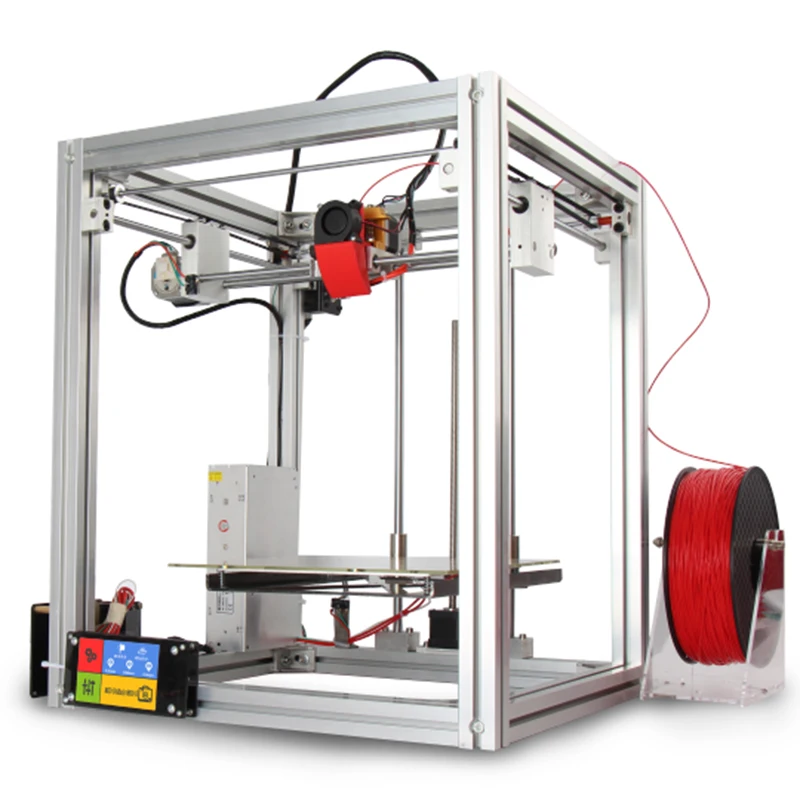
So where does the LulzBot AO-101 fit in the ever-more crowded 3D printer landscape? It is getting harder to differentiate between printers as more and more hit the market. There are many common denominators — they use fused filament fabrication (a nozzle that produces layers of molten plastic on the printing surface), process ABS and PLA plastics as basic materials and cost in the region of $1,500 to $2,000. Other 3D printers on this playing field include Ultimaker, Afinia, Leapfrog, the Cube or a Replicator [1].
Hardware
The LulzBot AO-101 3D printer comes almost fully assembled, and has an industrial rough appeal to it – with everything visible, from the mechanics to the RAMBo box. The build quality is also on level par to say the least — according to the manufacturer the AO-101 has been tested to print successfully even while a full grown adult stands on the machine. This is not necessarily the most obvious scenario, and with the machine on loan for the purposes of this review, I did not test it myself.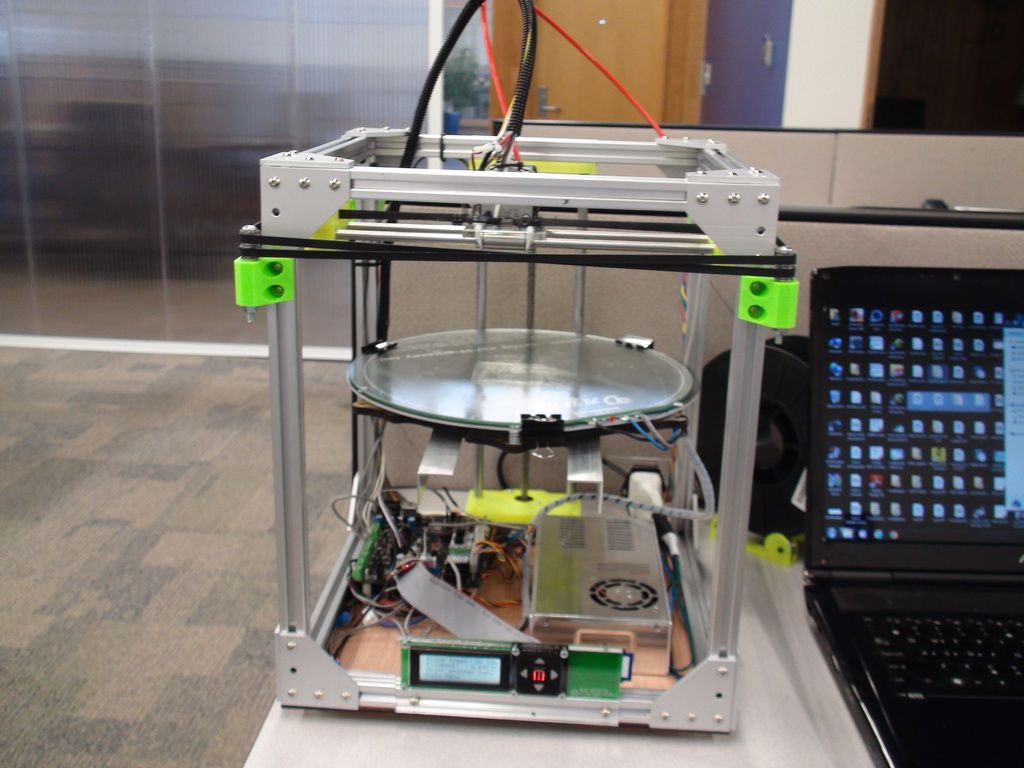 The size of the printer is 20″ x 25” x 20” (HxWxD) from the most outermost points with the filament spool attached to the frame, so it should fit most desks with ease and weighs 18lbs.
The size of the printer is 20″ x 25” x 20” (HxWxD) from the most outermost points with the filament spool attached to the frame, so it should fit most desks with ease and weighs 18lbs.
The most visually striking element of the AO-101 are the main frames, which are composed of a sturdy metal and a completely open solution – no styled covers, no plywood or any other conventional shape, just plain naked mechanical goodness in all its glory. The LulzBot AO-101 has its roots in RepRap and pays homage to this by virtue of the fact that 3D printed plastic parts also included in the set-up.
The printing bed is heatable and intended to be used with a glass plate, covered with a thin layer of adhesive plastic to help with the removal of parts — this is included in the equipment supplied. For anyone working to the ‘bigger is better’ mantra, the AO-101 might let some users down – the usable print area is 7.9” 7.5” x 3.9”. In my opinion, this is sufficient for many applications and definitely comparable with competitors’ equivalents. Of course there is always the option to print parts that can be assembled and then enjoy clicking them together.
Of course there is always the option to print parts that can be assembled and then enjoy clicking them together.
Overall the AO-101 is a very solid device hardware-wise. LulzBot’s choice of a sturdy metal frame with sufficiently sized bolts and nuts suggests there is no need for specific or delicate care to ensure perfect functioning from day to day. If the aesthetic design seems too spartan, however, building a simple custom casing from plywood or plastic shouldn’t prove to be too much of an issue for eager modders.
Bundle
The LulzBot AO-101 comes as an inclusive bundle and contains everything needed to start printing after a quick assembly. I was able to assemble everything and get to pluggin the power chord in after a less than hour (more on that later). There was an issue with attaching the filament guide to the frame – the slightly too short bolt – which is explained in the setting-up section in more detail. Besides the actual printer parts – the frame, filament guide and the filament spool – the basic kit includes a 5 lb roll of filament – natural white in colour, a quick-start guide and a comprehensive manual together with an extensive set of tool accessories from an Xacto knife to allen keys in a variety of sizes.
The problem of too many options is not something to worry about, as this bundle is currently the only available option for the AO-101.
In detail the kit contains the following:
Complete documentation, including a detailed manual with information for unpacking the printer, setup, downloading and the using software and starting your first print.
- Mountable Spool Holder
- Filament Feedtube
- Filament Feedtube Holder
- Startup supply of ABS filament, Natural, 3mm dia., 5lbs (2.3kg)
- Toolkit bag
- Allen Wrenches: 1.27mm, 2.5mm, 3mm, 4mm
- Combination Wrenches: 5.5mm, 13mm, 18mm
- Pliers, Needle Nose
- Tweezers
- Xacto Knife
- Dental Pick
- Flathed Bristle Brush
- Part Removal Knife (clam knife)
- Metric Ruler
- PET Sheet
- Acetone-safe Bottle (acetone not included)
- Nozzles: 0.5mm installed, includes 0.25mm and 0.35mm nozzles
- PTFE Tube for 1.
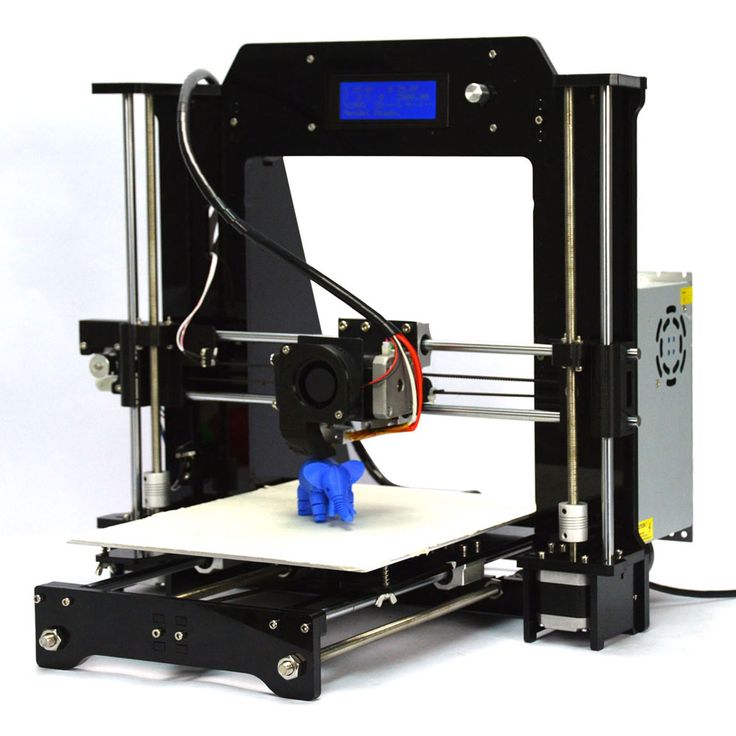 75mm Filament
75mm Filament - Micro SD card
- 90 Day Warranty
- 1 Year Support
[nggallery id=65]
Software
Following the open-source ethos most of the software needed to start up is available for download straight from LulzBot’s website. I stress ‘most’ here because not every folder contained actual downloadable files, such as the required drivers to have the 3D printer and the computer’s UI speak a common language. I think this was almost certainly an honest mistake, an oversight maybe.
[nggallery id=66]
Thankfully — for me — because the RAMBo units are also used in other 3D printers as well, the missing files were not hard to track down. Even step-by-step video guides for this stage are available online — you can always count on Youtube. What I, as an average Joe, would like for LulzBot to do is to follow the rest of the tech and electronic consumer market’s lead by including all the needed drivers, maybe on a USB stick or a Micro SD – which was already included in the bundle. This would create added value for the user by not having to rely on passing a click wall – even if a thin one – to get started even more quickly.
This would create added value for the user by not having to rely on passing a click wall – even if a thin one – to get started even more quickly.
The software used for creating the GCODE files, including printing specs, is Slic3r, which is very intuitive and easy to use even for a beginner. Printrun is used for actually operating the printer. Even though the LulzBot’s manual provides guidance, for example on the recommended temperatures for both ABS and PLA, the guidelines could be less ambiguous I thought. For example, it would have been great if the fact that the desired temperature has to be set before exporting the GCODE file from Slic3er was displayed more clearly. Also, the default temperature settings in Printrun varied slightly from the manual and because of the underlying parameters created by Slic3er the recommended temperatures could not be reached in Printrun – before changing them in Slic3r. Obvious for many, but not for everyone.
Even understanding that this machine is targeting the prosumer market, i. e. users with at least some basic understanding of the 3D printing process set-up, I would also like to have seen a segment explaining the impact of changing different parameters. For example the effect of changing the layer height, fill density, travel speed of different parts of the print etc. As an illustration, the default speed for the non-print movement was too fast for most prints, resulting in the layers not attaching to each other properly. Also trying to use a 0.1mm layer height didn’t prove too successful with uneven and distorted outcomes with practically any tested models. Does this all seem too obvious? At least I would have benefitted from something like this – even though I have to admit that the learning process proved to be very enjoyable, when trying different settings and their effect on the printing outcome.
e. users with at least some basic understanding of the 3D printing process set-up, I would also like to have seen a segment explaining the impact of changing different parameters. For example the effect of changing the layer height, fill density, travel speed of different parts of the print etc. As an illustration, the default speed for the non-print movement was too fast for most prints, resulting in the layers not attaching to each other properly. Also trying to use a 0.1mm layer height didn’t prove too successful with uneven and distorted outcomes with practically any tested models. Does this all seem too obvious? At least I would have benefitted from something like this – even though I have to admit that the learning process proved to be very enjoyable, when trying different settings and their effect on the printing outcome.
Other issues that I experienced with the software were related to Printrun, which consistently had trouble displaying the printing image during the process, but also generally crashing several times (tested using WIN 7 Enterprise). However, overall while this program was not perfect it did prove sufficient.
However, overall while this program was not perfect it did prove sufficient.
In conclusion, LulzBot AO-101 and the (recommended) software are all fully functional and can be used with all modern operating systems, whether it be OSX, Windows or some Linux distro. There are other options in the open-source community, if needed, but these already established softwares handled the job just fine.
Materials
Out of the box the AO-101 deposits the typical duo of materials – ABS and PLA plastic. It should also be able to make use of the much-vaunted Laywoo-D3.
Unfortunately, due to time constraints, I was unable to test the AO-101 with other materials, but the general tweakability of the printer suggests to me that other plastics could be used. LulzBot has also announced that other printable materials will eventually follow – but these basic materials provide a good starting point for creating a wide variety of objects.
Setting up
“Assembled and Ready to Print, Out of the Box” is the slogan LulzBot applies to the AO-101. But what about in real life – in the hands of a first timer? I have already mentioned a couple of issues related to the software, but what about getting the printer to print?
But what about in real life – in the hands of a first timer? I have already mentioned a couple of issues related to the software, but what about getting the printer to print?
Generally I found that setting the LulzBot up hardware-wise was relatively simple. The machine would have been ready to be plugged in within an hour – if it wasn’t for the US power cord that was supplied and me using old world outlets (I am based in Finland). With a product for the global market, it would be convenient for the user to either include a set of different plugs, considered standard for many tech devices, or provide the user with a universal adapter. Nothing that can’t be done by the user himself, obviously, but for a machine that costs $1,725 an all inclusive approach suitable for any global region could be expected. Whether this is the standard with the prosumer grade 3D printers is irrelevant – I would see it more as something that should become the de facto standard – even with printers taking their power from the network instead of the computer’s USB port.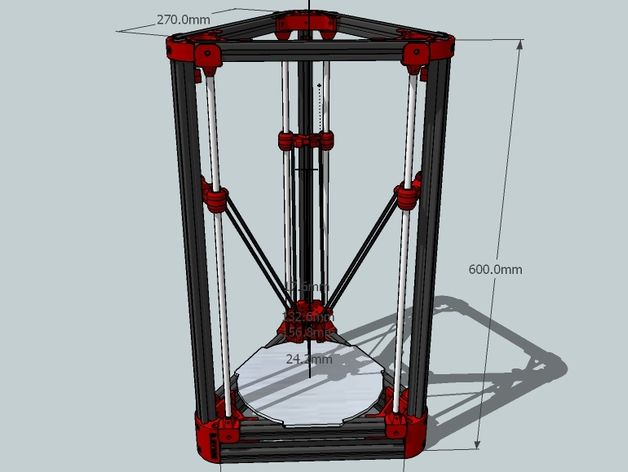
The actual set-up phase consisted of attaching the filament spool to the mount and the filament guide to the frame, applying the filament to the spool and feeding it through the tube to the extruder.
Even though the amount of assembly was quite minimal, I did experience some minor issues – regarding attaching the filament guide to the frame and tightening the extruder idler bolts after feeding the filament. I struggled a bit with the guide because the screws attaching them to the guide t-slot nuts – which are in the frame – were slightly too short and therefore I required a Philips screwdriver to lift the nuts to make the attachment possible. The idler, on the other hand, proved to be a bit challenging to raise back up and to push the springs back in their place after feeding the filament to the hot end.
Undoubtedly these, like the other issues I have mentioned are just small details – but nevertheless, should be refined, as the day of entering the major consumer market lies close ahead.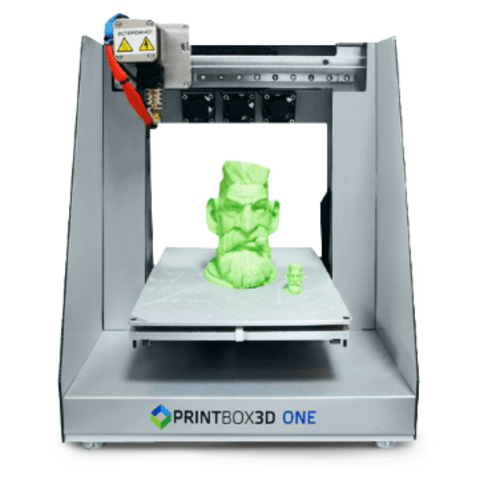
All of the calibration, end stop alignment and other adjustments had already been completed before leaving the factory. All that was left to do was to make sure that everything was indeed in order – which it was.
The printed user manual included is something that deserves a mention of its own – it is very illustrative, descriptive and easy to read – something for every tech company to compare their cryptic jargon-filled pages to.
Printing
Turning the power on creates a noticeable level of hum – something comparable to many other 3D printers, not more, not less. The actual printing sound level is naturally louder, but bearable – just. An exterior case may go some way to reducing this however, simultaneously communicating solid quality — matching the hardware quality.
For testing the actual printing performance I chose to use several models from Thingiverse, as I come from a non-existent background with 3D modelling. The first object was tbuser’s Raktajino Mug – a quite simple design.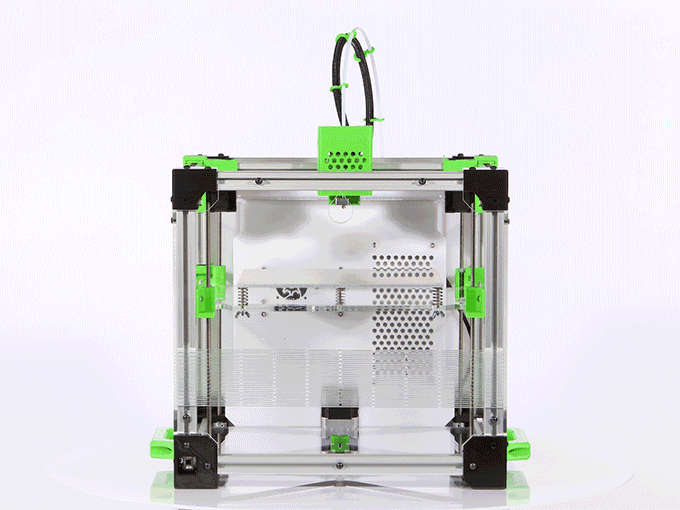 Using the included roll of 3mm filament, I printed the mug first with a 0.2mm layer height and a 0.4 fill density with perfect results. The outcome was very smooth on all parts of the mug. But when trying a more complex structure to further test the performance of the LulzBot, I printed out a cover for my SGS3 (The3DLibrary – Honeycomb case), the result was disappointing. I used the same settings, but ran into some problems with the honeycomb structure, which got distorted as the layer height seemed to be too low for creating an even result. I then changed the layer height to 0.3mm and tried again – now with a new apparent problem: the Slic3r’s default travel speed for non-print moves – 130mm/s – was way too fast, which resulted in the ends of the filament lifting up with the nozzle. After modifying the settings of the non-print speed to 70mm/s I was finally able to get a perfect result. Regarding the speed in general, using the 30mm/s speed for perimeter printing and 60mm/s for all infills and bridges (with 20mm’s for gap fill) seemed to be the most fail proof set-up.
Using the included roll of 3mm filament, I printed the mug first with a 0.2mm layer height and a 0.4 fill density with perfect results. The outcome was very smooth on all parts of the mug. But when trying a more complex structure to further test the performance of the LulzBot, I printed out a cover for my SGS3 (The3DLibrary – Honeycomb case), the result was disappointing. I used the same settings, but ran into some problems with the honeycomb structure, which got distorted as the layer height seemed to be too low for creating an even result. I then changed the layer height to 0.3mm and tried again – now with a new apparent problem: the Slic3r’s default travel speed for non-print moves – 130mm/s – was way too fast, which resulted in the ends of the filament lifting up with the nozzle. After modifying the settings of the non-print speed to 70mm/s I was finally able to get a perfect result. Regarding the speed in general, using the 30mm/s speed for perimeter printing and 60mm/s for all infills and bridges (with 20mm’s for gap fill) seemed to be the most fail proof set-up.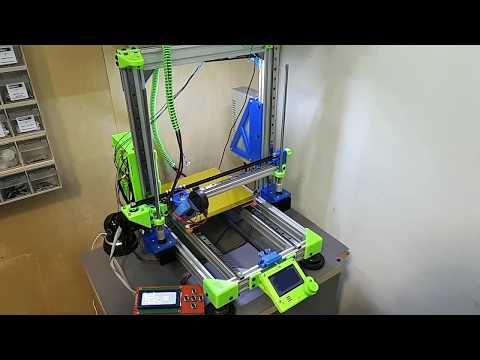
To gain a better understanding of the capabilities of the LulzBot I tested several intricate designs – such as a couple of different rings with carved text – with a 0.1mm layer height. The AO-101 seemed to struggle with this, with the filament of the first layer not attaching to the printing bed properly. This happened with all of the tested models (different jewellery and artefacts with fine detail) – despite dropping all of the print move speeds to 15mm for trying to ensure better adhesive properties and co-operation with the filament and the bed. However, I was able to get good results with 50mm/s perimeter speed and 70mm/s for the infill – the most favourable fill pattern for higher speeds was rectilinear; honeycomb concentric didn’t bring good results. Above these speeds, however, the quality of the prints lowered significantly.
Overall a positive experience, then. The LulzBot AO-101 performs well overall. It might not be the fastest 3D printer on the market or capable of going under 0.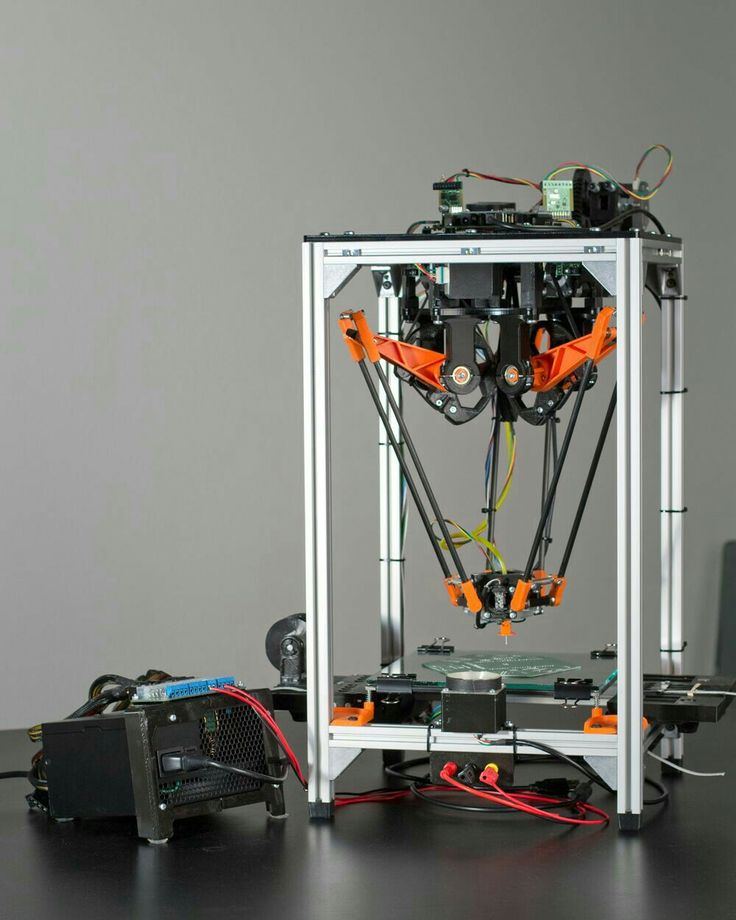 1mm heights with acceptable results, but it does perform solidly. I consider myself a complete novice as a 3D printer user, so ‘solidly’ is the key word here – the fact that the machine did not require any recalibration, but with the ideal settings did its job print after print is in fact its strongest point and the added value I was initially looking for. This also communicates excellence in terms of the build and design quality of the printer for me.
1mm heights with acceptable results, but it does perform solidly. I consider myself a complete novice as a 3D printer user, so ‘solidly’ is the key word here – the fact that the machine did not require any recalibration, but with the ideal settings did its job print after print is in fact its strongest point and the added value I was initially looking for. This also communicates excellence in terms of the build and design quality of the printer for me.
On the downside, the parts of the machine related to the filament, tend to have a slightly negative effect on the overall experience. As I mentioned earlier, a minor design flaw is revealed when attaching the filament guide to the printer’s top frame bar as the screws provided are slightly too short for doing this in a convenient manner. Another challenging aspect is apparent when loading the filament to the extruder unit – it requires some sleight to operate. However, the main weak point of the design is the filament spool and its arms designed to keep the filament roll in place. Even after repeatedly tightening the wing nuts as tight as humanly possible, eventually the inevitable happened – the arms sprung open and the roll of filament came partly off the spool – resulting in a tangled mess practically impossible to untangle in order to get going again.
Even after repeatedly tightening the wing nuts as tight as humanly possible, eventually the inevitable happened – the arms sprung open and the roll of filament came partly off the spool – resulting in a tangled mess practically impossible to untangle in order to get going again.
Despite the problems with the spool creating varying levels of annoyance, the pretty much perfect results from the printing are, of course, the most important thing. Therefore the overall experience is on good level.
[nggallery id=67]
Wrap-up
LulzBot AO-101 is a very solid performing 3D printer for the prosumer market. It is relatively fast and easy to start printing, provides consistent print quality and is open for modifying and tweaking according to the end user’s needs. The AO-101 also has a very sturdy design, which could even by stomped on during printing – literally.
Appearance-wise the beauty is in the eye of the beholder – it might be considered too industrial for some, but functionally beautiful to others. I myself belong to the latter group and find it very aesthetically pleasing.
I myself belong to the latter group and find it very aesthetically pleasing.
The negative aspects are related to some the functional parts of the design. The filament spool should be redesigned to better withstand the pressure from a full roll as well as the filament guide’s attachment to the frame.
But the bottom line – should you consider buying a LulzBot over the other options currently available in this class of 3D printer?
Unfortunately, I can’t give a yes or no answer here; the main reason being that there is no clear differentiating factor. In my opinion it’s priced realistically, it has specs to match its rivals and looks that even others besides a mother could love. But for me, the distinctive something – the intangible and emotional want-factor – did not come through. But it did offer a solid performance, which translates to reliability, trust and quality. I think if LulzBot takes this strong foundation and continues building on it, the company will do well. In a market where heritage is practically non-existent, this could be a factor that will be a cornerstone in creating a future success story.
In a market where heritage is practically non-existent, this could be a factor that will be a cornerstone in creating a future success story.
Big thanks to LulzBot and Kristin and Alicia from Wildrock PR & Marketing for providing the LulzBot for the purpose of this review.
Lulzbot AO-101 review | 50 facts and highlights
60points
Lulzbot AO-101
Lulzbot AO-101
Why is Lulzbot AO-101 better than the average?
- Weight?
8.18kgvs25.38kg - Maximum operating temperature?
240°Cvs145.52°C - Nozzle size?
0.5mmvs1.21mm - Layer thickness?
75µmvs98.25µm - Height?
381mmvs493.89mm - 3D print speed?
200mm/svs91.91mm/s - USB ports?
1vs0.74
Which are the most popular comparisons?
MakerBot Replicator
vs
Ultimaker
MakerBot Replicator 2
vs
MakerBot Replicator2x
Formlabs Form 1
vs
MakerBot Replicator 2
MakerBot Replicator 2
vs
Ultimaker 2
MakerBot Replicator Mini
vs
Ultimaker 2
MakerBot Replicator
vs
MakerBot Replicator 2
Price comparison
Components
Creates support structures
✖Lulzbot AO-101
The printer will automatically build extra structures to support the item as it is printing.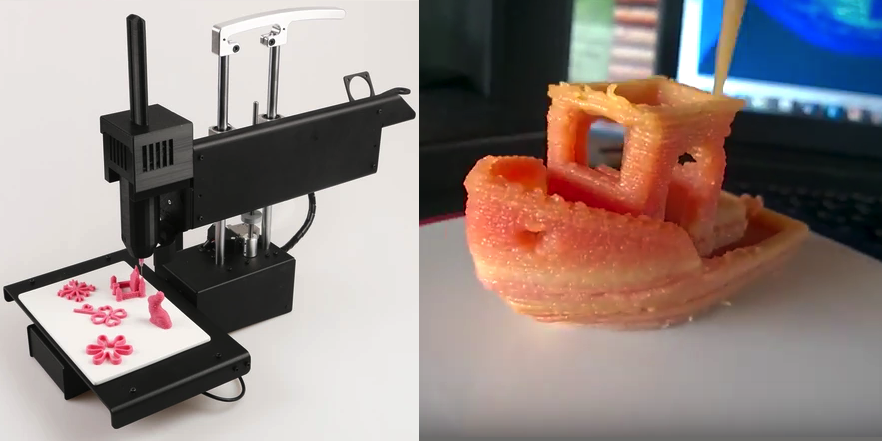 The extra support can then be easily removed.
The extra support can then be easily removed.
Has a heated build platform
✔Lulzbot AO-101
A heated build platform helps keep the lowest levels of a print warm as the higher layers are printed. This allows the overall print to cool more evenly.
1.75mm filament diameter
✔Lulzbot AO-101
The 1.75mm filament diameter is gradually overtaking the previous 3mm standard. The 1.75mm filament feeds into the printer with greater ease and allows for more detail in the printing process.
nozzle size
The smaller the nozzle, the more detailed the final product can be. However, when speed of printing is of greater importance than detail, a larger nozzle may be preferable.
3D print speed
200mm/s
The speed at which 3d objects are printed, measured in millimeters per second.
number of extruder heads
More extruder heads allow you to use different colors and different types of material at the same time.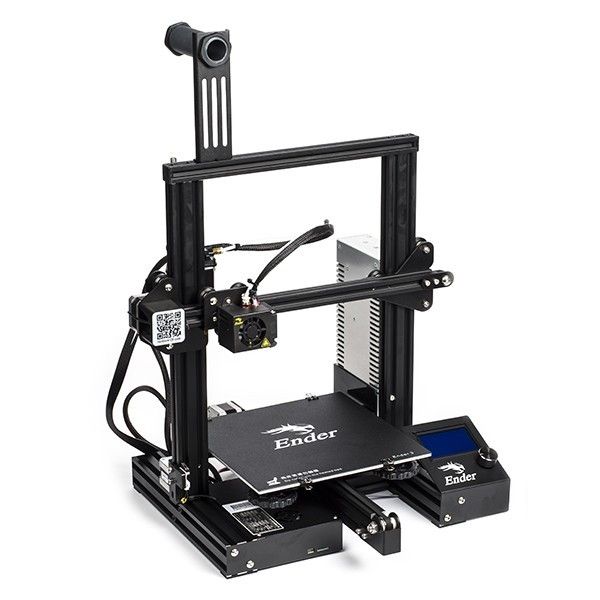 A second extruder is also required to build PVA/PLA support structures around items as they are printed.
A second extruder is also required to build PVA/PLA support structures around items as they are printed.
Has an automatic platform calibrator
✖Lulzbot AO-101
This feature saves time and effort in terms of maintenance, however the build platform itself still needs to be manually levelled.
Prints in hollow mode
✖Lulzbot AO-101
Hollow mode will build the item quickly and using less material. This will allow you to print quick prototypes of your designs before printing a solid model i.e for presentational designs rather than functional solid ones.
Materials
Prints in PLA
✔Lulzbot AO-101
Polylactic acid (PLA) is popular in 3D printing as it cools and sets quickly. Unlike ABS plastic, it is biodegradable and therefore better for the environment. It can be used to build support structures for other printouts, as it can then be dissolved leaving no marks.
Prints in full color
✖Lulzbot AO-101
Similar to regular 2D printers, this type of 3D printer mixes different colors between cartridges. This process allows the printer to reproduce the color spectrum, therefore allowing you to print in almost any color.
Prints in HIPS
✖Lulzbot AO-101
The printer is able to print in High Impact Polystyrene (HIPS). HIPS is similar to ABS plastic, but uses different solvents (limonene rather than acetone). HIPS is easy to paint and glue.
Prints in ABS plastic
✔Lulzbot AO-101
The printer prints in ABS (acrylonitrile butadiene styrene). This is up to 30 times stronger than regular plastic and is commonly used in 3D printing.
Prints in PVA
✖Lulzbot AO-101
Polyvinyl Acetate is another form of plastic used in 3d printing similar to ABS. It can be used to build support structures for other prints, as it can then be dissolved leaving no marks.
Prints in paper
✖Lulzbot AO-101
The printer is able to print in paper. 3D printing in paper involves an additive process whereby a laser cuts each layer of paper into the correct shape to create the final model. Paper 3D printed objects have a similar consistency to wood.
Prints in wood
✖Lulzbot AO-101
The printer is able to print in wood. This typically involves printing using a mixture of wood particles and a binding agent, which dries as solid wood.
number of colors per print
A single design can be made up using different colored materials simultaneously.
Print sizes
layer thickness
The thinner each print layer is, the more detailed you can make your designs. Layer thickness is often also referred to as resolution and is measured in microns (µm).
maximum creation size
200 x 190 x 100mm
This is the biggest size of object that you can print.
minimum print size
Unknown. Help us by suggesting a value.
This is the smallest size of object you could print with the printer, in terms of volume (cm³).
x-axis resolution
The highest possible x-axis resolution, measured in microns.
y-axis resolution
The highest possible y-axis resolution as measured in microns.
z-axis resolution
Unknown. Help us by suggesting a value.
The highest possible z-axis resolution as measured in microns.
Connectivity
has an external memory slot
✔Lulzbot AO-101
The device has a standard memory slot (such as an SD or micro SD card slot) that enables you to extend the built-in internal storage with affordable memory modules, or easily retrieve data, such as photographs, from the memory card.
USB ports
With more USB ports, you are able to connect more devices.
RJ45 ports
Unknown. Help us by suggesting a value.
RJ-45 ports are used for LAN (Local Area Network) connections. With more ports you can achieve increased bandwidth across a LAN, or connect to multiple networks. It also has the added benefit of not losing connection to the network if one fails.
supports Wi-Fi
✖Lulzbot AO-101
The device can connect to Wi-Fi.
Wi-Fi version
Unknown. Help us by suggesting a value.
The Wi-Fi versions supported by the device.
Has plug and play feature
✖Lulzbot AO-101
The device is set up and ready to be used with the included software.
Is cloud enabled
✖Lulzbot AO-101
Cloud compatibility allows you to control the operation of the device remotely using your smartphone, tablet or other mobile internet devices.
Features
Has a display
✖Lulzbot AO-101
The device has an electronic display to present information to the user.
screen size
Unknown. Help us by suggesting a value.
The bigger the screen size is, the better the user experience.
has a touch screen
✖Lulzbot AO-101
You can operate the device easily, by pressing the screen with your fingers.
audible noise
Unknown. Help us by suggesting a value.
Audible noise is the noise that a device produces while in operation. Reduced audible noise improves quality.
idle noise level
Unknown. Help us by suggesting a value.
The level of noise when it is not in use.
included designs
Unknown. Help us by suggesting a value.
With 3D designs already installed on the printer, you can start printing straight away.
Is pre-assembled
✖Lulzbot AO-101
As the product arrives fully assembled, you do not have to build it from a kit.
operating power consumption
Unknown. Help us by suggesting a value.
How much power the device consumes when it's switched on.
Price comparison
Which are the best 3D printers?
0028 25µm vs 75µm415mm vs 464mm
415mm vs 483mm
2 vs 1
Why is Lulzbot AO-101 better than botObjects ProDesk3D?
- 19.82kg lighter?
8.18kg vs 28kg - 179mm lower?
381mm vs 560mm - 25mm/s faster print speed?
200mm/s vs 175mm/s - 167.49x larger max 3d print size?
200 x 190 x 100mm vs 27.5 x 27.5 x 30mm
Which comparisons are the most popular?
botObjects ProDesk3D
vs
FABtotum
botObjects ProDesk3D
vs
Bits from Bytes RapMan 3. 2 3D Printer Kit Universal
2 3D Printer Kit Universal
botObjects ProDesk3D
vs
MakerBot Replicator
botObjects ProDesk3D
vs
Robox
botObjects ProDesk3D
vs
Ultimaker 2
botObjects ProDesk3D
vs
The Future is 3D Glacier Steel
Price Matching
Components
Auxiliary Item Manufacturing
✔botObjects ProDesk3D
✖Lulzbot AO-101
The printer will automatically create the intermediate elements needed to print the product. Extra elements can be easily removed later.
Heated perforated bed included
✔botObjects ProDesk3D
✔Lulzbot AO-101
Heated print bed is designed to keep the bottom of the product warm while the top is being printed. This is necessary for more uniform cooling of the product.
1.75 mm filament
✔botObjects ProDesk3D
✔Lulzbot AO-101
1. 75 mm filament is gradually replacing the old 3mm standard. 1.75mm filament is easier to accept by the printer and provides more flexibility in the printing process.
75 mm filament is gradually replacing the old 3mm standard. 1.75mm filament is easier to accept by the printer and provides more flexibility in the printing process.
nozzle size
Unknown. Help us offer a price. (botObjects ProDesk3D)
The smaller the nozzle, the more detailed the final product. However, if print speed is much more important than detail, large nozzles are preferable.
3D print speed
175mm/s
200mm/s
Speed at which 3D objects are printed. Measured in millimeters per second
number of print heads
The more print heads, the more different inks or media types can be used at the same time. The second extruder is required to build the PVA/PLA auxiliary elements around the main ones during printing.
Automatic platform calibration
✔botObjects ProDesk3D
✖Lulzbot AO-101
This feature saves time and attempts to set up. However, the level of the perforated platform still needs to be adjusted manually.
However, the level of the perforated platform still needs to be adjusted manually.
Hollow print option available
✖botObjects ProDesk3D
✖Lulzbot AO-101
Hollow print builds a product quickly using a minimum amount of materials. With this option you can make drafts before creating solid models, i.e. products for presentation instead of solid functional instances.
Materials
Printing in PLA
✔botObjects ProDesk3D
✔Lulzbot AO-101
Polylactide (PLA) is a popular material in 3D printing because it cools and hardens quickly. Unlike ABS polymer, it is biodegradable and therefore biodegradable.
Prints in full color
✔botObjects ProDesk3D
✖Lulzbot AO-101
These 3D printers, just like conventional 2D printers, mix inks from different cartridges. Combining different inks allows the printer to reproduce the color spectrum so that almost any shade of color can be matched.
Prints in HIPS
✖botObjects ProDesk3D
✖Lulzbot AO-101
The printer is capable of printing in high impact polystyrene (HIPS). HIPS is similar to ABS but uses different solvents (limonene instead of acetone). UPS is easy to paint and glue.
Printing in ABS
✔botObjects ProDesk3D
✔Lulzbot AO-101
The printer prints in ABS (a plastic based on acrylonitrile, butadiene and styrene). It is 30 times stronger than conventional plastic and is most commonly used in 3D printing.
Printing in PVA
✔botObjects ProDesk3D
✖Lulzbot AO-101
Another type of resin used in 3D printing, similar to ABS, is polyvinyl acetate (PVA). It is used to create auxiliary elements for printing, as it can dissolve without a trace.
Prints on paper
✖botObjects ProDesk3D
✖Lulzbot AO-101
The printer is capable of printing on paper. 3D printing in paper involves an additional process: a laser cuts each layer of paper according to a predetermined shape in order to obtain the desired end product. 3D printed paper objects are similar in texture to wood.
3D printing in paper involves an additional process: a laser cuts each layer of paper according to a predetermined shape in order to obtain the desired end product. 3D printed paper objects are similar in texture to wood.
Prints in a tree
✖botObjects ProDesk3D
✖Lulzbot AO-101
The printer is capable of printing in a tree. Usually, the printing process uses a mixture of wood components and a binder, which, when dried, becomes hard like wood.
Number of colors to print
Unknown. Help us offer a price. (botObjects ProDesk3D)
The simultaneous use of a variety of color materials makes it possible to select an exclusive design.
Print sizes
layer thickness
The thinner the print layer, the clearer the design. Layer thickness is often referred to as resolution. Measured in microns.
maximum project size
27. 5 x 27.5 x 30mm
5 x 27.5 x 30mm
200 x 190 x 100mm
This is the largest object size that can be output to the printer.
minimum print size
Unknown. Help us offer a price. (botObjects ProDesk3D)
Unknown. Help us offer a price. (Lulzbot AO-101)
This is the smallest volume (cm³) object size that can be output to the printer.
X resolution
Unknown. Help us offer a price. (botObjects ProDesk3D)
Maximum possible X-axis resolution, measured in microns.
Y resolution
Unknown. Help us offer a price. (botObjects ProDesk3D)
Maximum possible Y-axis resolution, measured in microns.
Z resolution
Unknown. Help us offer a price. (Lulzbot AO-101)
Maximum possible Z-axis resolution, measured in microns.
Connection
has a slot for memory cards
✔botObjects ProDesk3D
✔Lulzbot AO-101
The device has a standard slot for memory cards (SD, MicroSD, etc.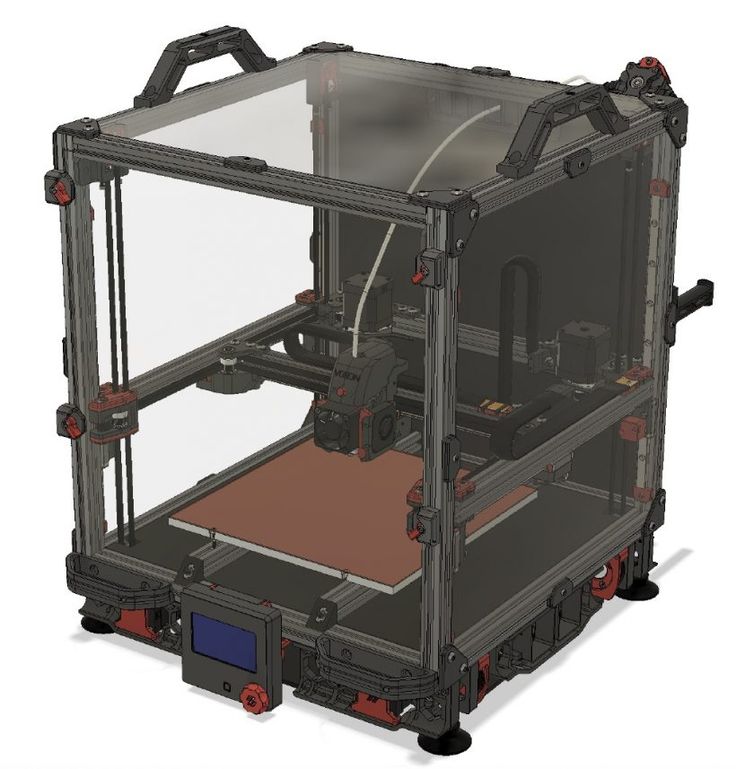 ), so you can either expand the internal memory with available memory modules, or you can easily retrieve data such as photos from a memory card.
), so you can either expand the internal memory with available memory modules, or you can easily retrieve data such as photos from a memory card.
USB sockets
With more USB sockets, you can connect more devices.
RJ45 ports
Unknown. Help us offer a price. (botObjects ProDesk3D)
Unknown. Help us offer a price. (Lulzbot AO-101)
RJ-45 ports are used for LAN connection. More ports increase throughput within the network, or allow connection to multiple local networks. Another advantage: the connection does not disappear in the event of a failure of one of the networks.
has Wi-Fi
✖botObjects ProDesk3D
✖Lulzbot AO-101
Device can connect to Wi-Fi.
Wi-Fi version
Unknown. Help us offer a price. (botObjects ProDesk3D)
Unknown. Help us offer a price. (Lulzbot AO-101)
Wi-Fi versions supported by the device.
Plug and play
✔botObjects ProDesk3D
✖Lulzbot AO-101
The device is configured and ready to work with the included software.
Cloud technology support (cloud computing)
✖botObjects ProDesk3D
✖Lulzbot AO-101
Cloud technology compatibility enables remote control of devices using smartphones, tablets and other Internet devices.
Functions
Display included
✖botObjects ProDesk3D
✖Lulzbot AO-101
The device is equipped with an electronic display to present information to the user.
screen size
Unknown. Help us offer a price. (botObjects ProDesk3D)
Unknown. Help us offer a price. (Lulzbot AO-101)
The larger the screen size, the better the user experience.
has a touch screen
✖botObjects ProDesk3D
✖Lulzbot AO-101
You can control the device by directly touching objects on the screen with your fingers.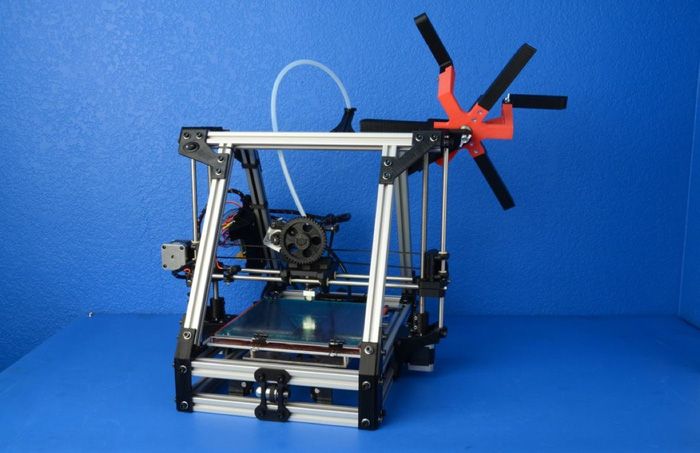
acoustic noise level
Unknown. Help us offer a price. (botObjects ProDesk3D)
Unknown. Help us offer a price. (Lulzbot AO-101)
The device produces acoustic noise during operation. Reducing acoustic noise improves quality.
Non-operating noise level
Unknown. Help us offer a price. (botObjects ProDesk3D)
Unknown. Help us offer a price. (Lulzbot AO-101)
Noise level when not in use.
established designs
Unknown. Help us offer a price. (botObjects ProDesk3D)
Unknown. Help us offer a price. (Lulzbot AO-101)
With 3D designs already installed on the printer, you can start working right away.
Pre-assembled
✖botObjects ProDesk3D
✖Lulzbot AO-101
Since the product is delivered fully assembled, there is no need to build it from components.
power consumption during operation
Unknown. Help us offer a price. (botObjects ProDesk3D)
Unknown. Help us offer a price. (Lulzbot AO-101)
How much power is consumed by a working device.
Price comparison
Which 3D printers are best?
Free 3D file Stabilized x-carriage for AO-100 and AO-101・3D printing design to download・Cults
The best files for 3D printers in the Tools category
Zim Box Test
Free
Wall mount Filament
2.99 €
Table hook for headphones
Free
DIY Car Radio replacement 2
Free
ikea lack screwless stacker tool holder
Free
IKEA Pegboard Spool holder with filament guide
Free
Roman Colosseum Full detailed view of the world
Free
Bestsellers in the Tools category
Printer boxes for Ikea Lack Table
€1.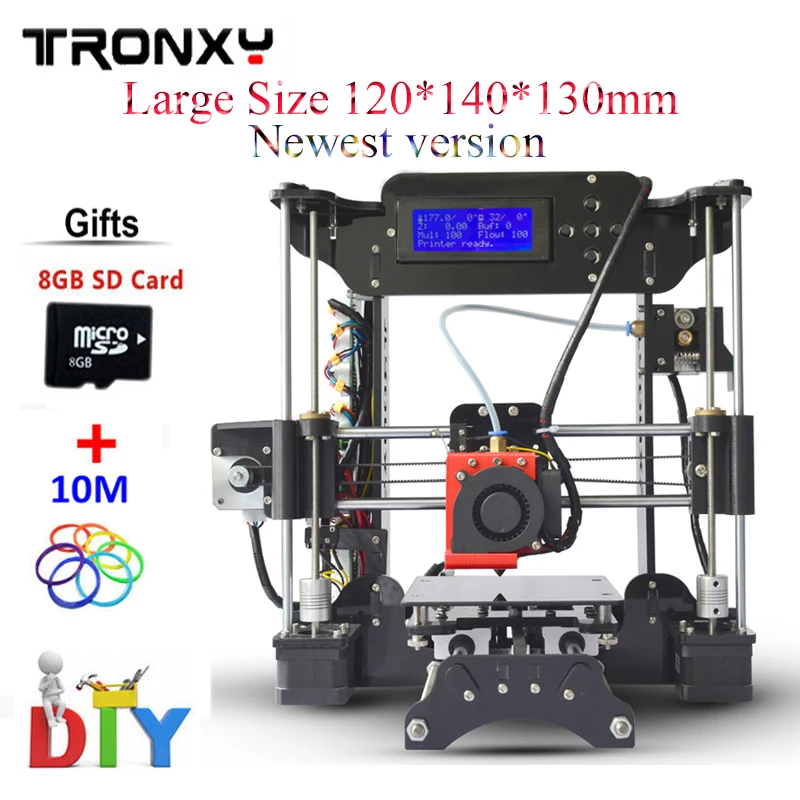 99
99
Tool holder for 3D printer V3.0
1.03 €
ENDER 3 S1/S1 PRO, PROFILE 2020 ALU, REEL HOLDER AND DEPORTED REEL
2,11 €
Creality Sonic Pad Mount for Ender 3 S1
0,99 €
3D SCAN STAND
2 €
Fan air duct Sovol SV06 5015 - CFD optimized
3.75 €
PRECISE DIAL INDICATOR 3D PRINT DIY
1,90 €
Phone holder
2.79 €
INDICATOR FOR BETTER BED LEVELING FOR ENDER 3 V2
2,35 €
FLSUN v400 display holder
€9.99 -50% 4.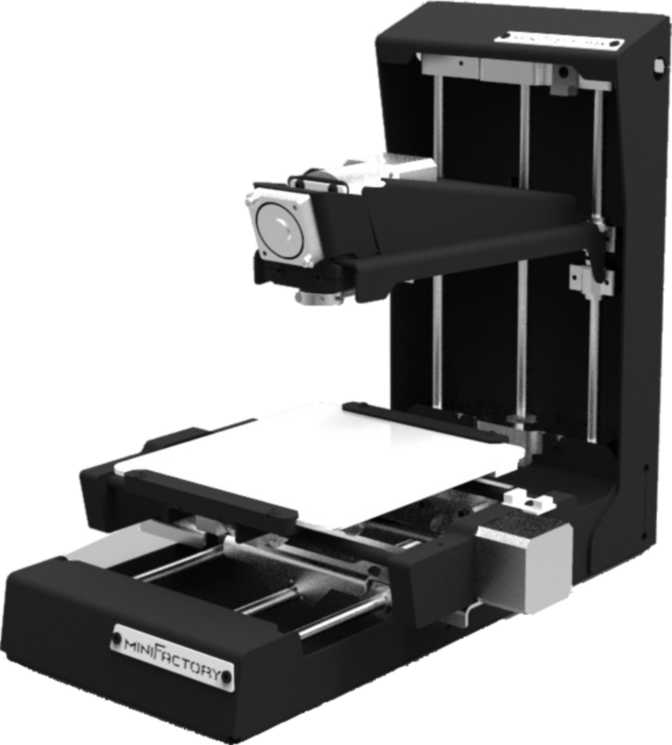 99 €
99 €
Ender 3 Briss fang Gen2, red lizard, spider, nf crazy, dragonfly, etc.
1.72 €
Ender 3 S1 BEST cable guide - vertical
2.50 €
UNIVERSAL BED LEVELING INDICATOR FOR VERY ALL PRINTERS
2,35 €
Ratchet holders - magnetic - holders for toolbox organization
2,66 €
Ender 3 S1 Dual 40mm Fan Hot End Duct
1.41 €
Fire Hydrant Storage Container
1.87 €
💖 Do you want to support Cults?
Do you like Cults and want to help us continue our journey on our own ? Please note that we are a small team of 3 people, so it is very easy to support us in maintaining activities and creating future developments of .


